A Conical Screw Dryer has a spinning helical screw inside a cone-shaped chamber. This machine dries things by using a vacuum and indirect heat together. Many industries use this dryer because it keeps sensitive or dangerous products safe. Some special features are:
Vacuum operation lets it dry at low temperatures, so it protects materials that cannot handle heat
It has exact temperature control and gentle mixing, so everything dries evenly
You can change it to work with different materials and moisture levels
It uses advanced automation, so it works faster and better
The design saves energy and follows strict rules
These features make the Conical Screw Dryer useful for making medicine, chemicals, and food.
Key Takeaways
A conical screw dryer dries things using vacuum and gentle heat. It keeps heat-sensitive and fragile products safe. The cone shape and screw agitator mix materials softly. This helps dry everything evenly and stops clumps or damage. The dryer uses less energy because it works at lower temperatures. Smart controls and automation make drying faster. Many industries use this dryer, like pharmaceuticals, food, chemicals, and cosmetics. It can handle powders, pastes, granules, and liquids safely. Cleaning is easy, and the sealed design keeps products pure. Strong safety features protect workers and keep things clean. This makes it great for places with strict hygiene rules.
How Conical Screw Dryer Works?
A conical screw dryer operates by combining drying and mixing in a single process. It utilizes a conical vessel with a rotating screw to ensure effective drying of materials.
Key Components
A Conical Screw Dryer has many important parts. Each part helps the dryer work well and safely. The table below lists the main parts and what they do:
Component | Function |
|---|---|
Conical cylinder with heating jacket | Keeps the right temperature for drying. It uses hot water, oil, or steam. |
Single spiral ribbon agitator (screw agitator) | Moves material from the bottom to the top. This helps heat spread and dries everything the same. |
Vacuum system (vacuum pump) | Lowers the pressure inside. This helps water turn into vapor and leave. |
Condenser | Collects the vapor and turns it back into liquid. You can reuse or throw away this liquid. |
Discharge valve | Lets you take out the dried material from the dryer. |
Backflush device | Clears dust from the vacuum channels. This keeps the dryer working well. |
Sealed system | Stops germs or dirt from getting in. This is important for medicine and clean products. |
Holds and heats the material while it stirs inside. | |
Screw blades (hollow) | Mix and move the material to help it dry faster. |
Shell (semi-pipe type) | Gives the dryer its shape and heating surface. The cover opens for loading and unloading. |
Chiller | Sends cold water to keep the condenser working. |
Temperature controller | Keeps the drying temperature just right. |
Note: All these parts work together to make drying safe and controlled.
Drying Process
The Conical Screw Dryer uses a special way to dry things. Here are the steps:
The cone shape helps materials move and lets heat spread everywhere.
The vacuum system makes the pressure lower inside. This helps water or other liquids turn to vapor at lower heat.
The heating jacket keeps the temperature steady. It uses hot water, oil, or steam.
The screw agitator lifts material up. Gravity pulls it back down.
This movement lets all the material touch the heat and vacuum. Everything dries evenly.
The condenser catches the vapor and turns it into liquid. You can remove or reuse this liquid.
The sealed system keeps the process clean. It stops outside air or dust from getting in.
This way, the dryer protects soft or breakable materials. It also saves energy and keeps the product safe.
Mixing Mechanism
The mixing system makes sure everything dries the same way. It uses a special motion to mix:
The screw agitator spins and also moves around the cone wall. This makes a planet-like motion.
The screw lifts material up. Gravity brings it back down. This keeps the material moving in a loop.
The up and down movement mixes all the pieces. This stops clumps and keeps the mix even.
The cone shape helps things flow and stops spots where nothing moves.
Some dryers have two screws for faster mixing or for light materials.
The gentle mixing keeps soft or heat-sensitive products safe.
The vacuum and temperature controls work with the mixer. This keeps drying even and safe.
Tip: This mixing style helps make high-quality products, even with tricky or delicate materials.
What Are the Key Features of a Conical Screw Dryer?
A conical screw dryer is a versatile industrial drying machine known for its efficient drying process, gentle handling of materials, and energy efficiency. It is widely used in various industries such as pharmaceuticals, chemicals, and food processing.
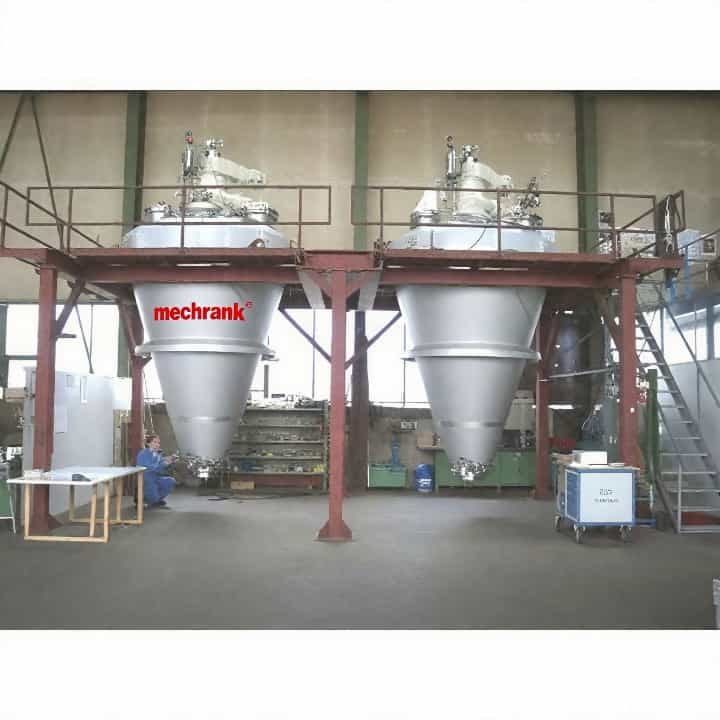
Vacuum and Indirect Heating
A Conical Screw Dryer uses a vacuum and indirect heat to keep sensitive products safe. The vacuum makes the pressure inside lower. This helps water or solvents turn into vapor at cooler temperatures. Indirect heating sends steam or hot water through the walls. The material does not touch the heat source. This keeps the product from burning or breaking down. The drum turns and moves the material gently. Every part dries the same way. These features help keep heat-sensitive items high quality. Many industries, like medicine and food, use this dryer. It saves energy and works well with delicate things.
Tip: Vacuum drying can also collect solvents. This makes the process better for the environment and more efficient.
Low Shear and High Containment
The Conical Screw Dryer mixes materials gently. The screw is on an arm that moves along the wall. This lifts the product up from the bottom. Gravity pulls it back down. This makes a soft, three-way mixing motion. This gentle movement keeps fragile particles safe and keeps their shape. The design keeps everything inside the dryer. Special dust filters and sealed systems stop leaks. They keep dangerous or explosive materials safe. The cone shape helps all the product flow out. Nothing gets stuck inside. This setup cuts down on waste and keeps the area clean.
Compliance and Maintenance
Aspect | Details |
|---|---|
Compliance Standards | Meets cGMP, FDA, ISO 9001, ATEX, and other global standards. |
Maintenance Features | Easy-to-clean surfaces, no product zone lubricants, and removable parts for quick service. |
Cleaning Options | Supports Clean-In-Place (CIP) and Sterilize-In-Place (SIP) with spray nozzles. |
Design Advantages | Polished, crevice-free internals and bottom discharge prevent contamination and dead zones. |
These dryers are made for strict hygiene and safety. The smooth steel surfaces are easy to clean. Automated controls watch the temperature and pressure. This keeps the process safe and steady. These features help keep clean rooms safe. They also help companies follow strict rules for making medicine and food.
What Are the Benefits of Using a Conical Screw Dryer?
A conical screw dryer offers efficient drying, uniform mixing, and gentle handling of sensitive materials. It is ideal for industries requiring high-quality drying, such as pharmaceuticals and chemicals.
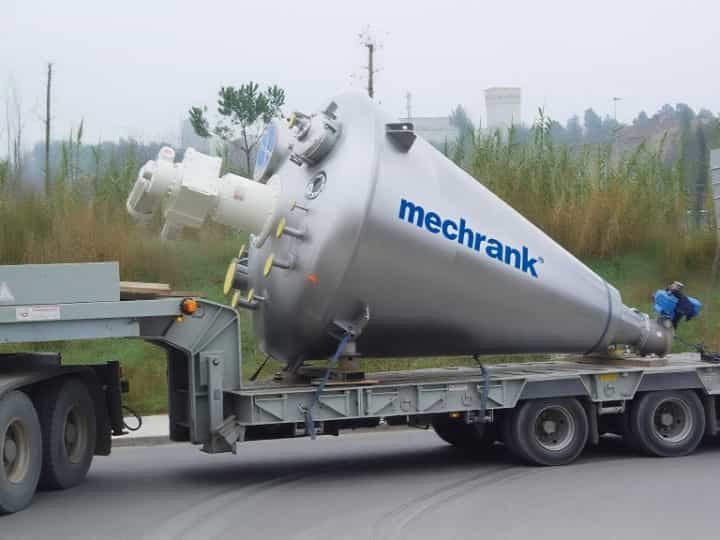
Product Quality
A Conical Screw Dryer helps companies keep products safe and good. The gentle drying keeps the shape, taste, and nutrients in food and medicine. Many companies pick this dryer because it keeps important parts stable. The machine uses even heat and soft mixing, so everything dries the same. This stops things from getting too dry or not dry enough. Here are some ways it helps product quality:
Gentle and even drying keeps food and medicine safe and fresh.
The process protects key parts in medicine, so products stay pure and follow strict rules.
Even heat helps food keep its taste and nutrition.
The dryer lowers the chance of mistakes, like drying too much or too little.
New features, like heat recovery and hybrid drying, make the process better for sensitive products.
Note: The gentle way this dryer works is good for fragile or valuable things.
Efficiency
Conical screw vacuum dryers work with a vacuum. This lowers the boiling point of water or solvents, so drying happens at lower heat. The process saves energy and keeps the product safe from too much heat. The vacuum also helps remove water faster, which makes drying quicker. Less time means less risk of damage from air or heat. Many dryers now use smart controls and automation. These features let workers watch and change the process as it happens. Because of this, companies use less energy and finish drying faster than with old machines.
Versatility
Criteria | Single Screw Mixer | Double Screw Mixer |
|---|---|---|
Batch Size | Small to Medium | Medium to Large |
Material Type | Standard or uniform-density materials | Low-density, fragile, segregative, or complex materials |
Mixing Time | Moderate | Faster |
Application Complexity | Basic mixing | Advanced coating, wet granulation, viscous blending |
Cost | Cost-efficient | Higher initial investment |
A Conical Screw Dryer can handle many kinds of materials, like powders, pastes, and liquids. The cone shape and screw design help mix and dry both small and big batches. Single screw models are good for simple jobs. Double screw models work for harder tasks and bigger loads. The machine can dry fragile, sticky, or heat-sensitive products. Companies in medicine, food, chemicals, and cosmetics use this dryer because it fits many needs. The design also makes cleaning easy and helps stop waste.
What Are the Applications of a Conical Screw Dryer?
A conical screw dryer is predominantly used in the chemical, pharmaceutical, and food industries for drying and mixing powders, granules, and pastes. Its efficiency in handling heat-sensitive and highly viscous materials makes it ideal for these applications.
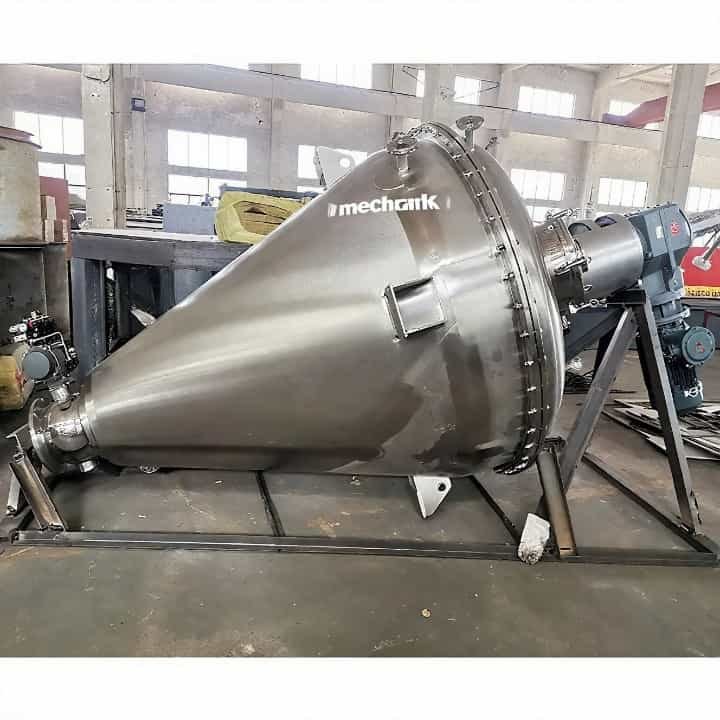
Industries
Many industries use this dryer because it works well with special products. Some of the main industries are:
Pharmaceutical manufacturing
Companies dry active pharmaceutical ingredients, excipients, and intermediates. The gentle process keeps these delicate compounds safe and pure.Chemical processing
Factories dry resins, pigments, and special powders. The dryer also helps with crystallization, chemical reactions, and mixing.Food and nutraceuticals
Producers dry protein powders, cocoa, and plant extracts. The low heat keeps flavors and nutrients safe.Cosmetics and personal care
Manufacturers dry emulsions, clays, and natural additives. The closed system keeps products clean and stops contamination.Additive manufacturing
Engineers dry special polymers and metal powders. The dryer helps make high-quality advanced materials.
Note: These industries pick this dryer because it can handle heat-sensitive, fragile, or pure materials. The closed system also stops solvent loss and keeps things clean.
Materials
This dryer can work with many types of materials. It handles different shapes and sizes, so it is very flexible. Some common materials are:
Powders
The dryer dries fine powders and special blends without breaking them.Granules
It dries granules up to 5 mm and keeps their shape.Filter cakes
The machine dries wet filter cakes from chemical or drug processes.Pastes and slurries
It removes water from thick pastes and slurries, even sticky or hard ones.Liquids
Some models can dry liquids by turning them into powders or granules.
The vacuum system and gentle mixing make this dryer great for thermal sensitive materials. It keeps heat and mass transfer working well, so products dry evenly and safely.
How Does a Conical Screw Dryer Compare to Other Dryers?
A conical screw dryer offers superior drying efficiency and gentle handling of sensitive materials compared to other dryers. It achieves uniform drying via a rotating screw that moves material upward, ensuring consistent heat exposure and minimal product degradation.
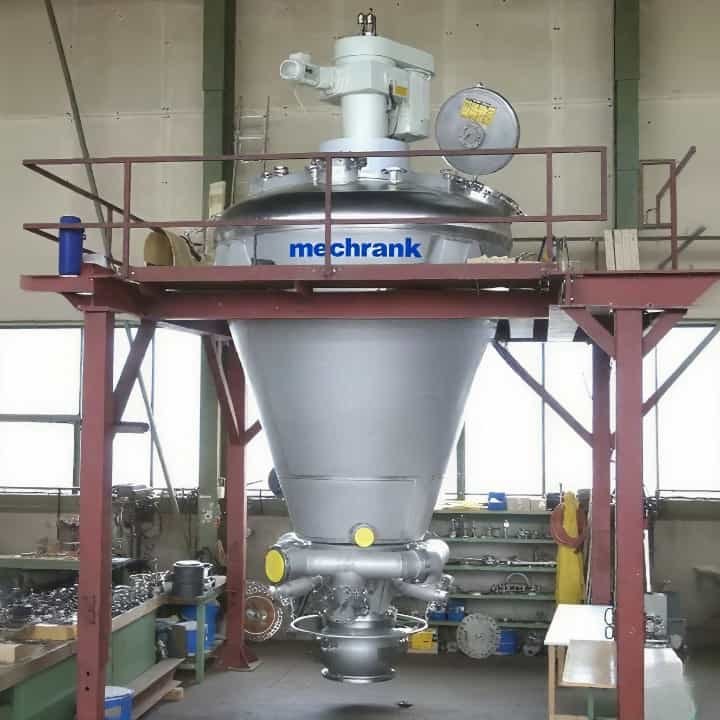
Vacuum Dryers
Vacuum dryers use low pressure to take out water. They are good for things that cannot handle heat. These dryers make water boil at a lower temperature. This helps dry things faster and keeps them safe from heat. Many vacuum dryers, like conical vacuum dryers, mix gently and spin all the time. This makes sure everything dries the same way. The vacuum also stops air from causing changes in the product. This keeps the quality high. The cone shape is easy to clean and lets you get all the product out. These things make vacuum dryers a smart pick for jobs that need quick and gentle drying.
Note: Vacuum drying keeps soft ingredients safe and makes drying faster.
Paddle Dryers
Paddle dryers have a sideways tank with paddles inside. The paddles move and heat the material. This helps heat spread fast. Paddle dryers are good for hard or lumpy solids. They can mix with a lot of force and break up big pieces. But the paddle system is more tricky and needs more care. Cleaning takes longer because of the shape and paddles. The table below shows how they are different:
Aspect | Conical Screw Dryer | Paddle Dryer |
|---|---|---|
Vessel Orientation | Vertical when emptying; spins sideways when working | Long sideways tank |
Agitator Design | One screw inside a cone | Many paddles held at both ends |
Mixing & Heat Transfer | Screw mixes and heats with warm walls | Paddles mix and heat; warm fluid goes through paddles and walls |
Handling of Solids | Good for simple solids; easy to clean out | Handles tough or lumpy solids with strong paddles |
Discharge | Product leaves through bottom nozzle when upright | Leaves through bottom; sometimes not all comes out |
Maintenance | Simple shape and upright emptying make cleaning easy | More parts and warm paddles make care harder |
When to Choose
Engineers pick a conical screw dryer for drying powders, granules, pastes, or thick slurries that are sensitive to heat. This dryer is best for things with solvents or that are dangerous. The vacuum lowers the heat needed and mixes gently. This keeps the product safe and helps with safety. The design dries things fast, lets you get all the product out, and is easy to clean. Companies like this dryer for tricky or risky materials, good mixing, and saving energy.
Tip: If you want gentle drying, high quality, and easy cleaning, the conical screw dryer is a great choice.
How Do You Choose the Right Conical Screw Dryer?
To choose the right conical screw dryer, consider your material properties, desired drying efficiency, and specific application requirements. Evaluate factors such as material compatibility, capacity, and control features to ensure optimal performance.
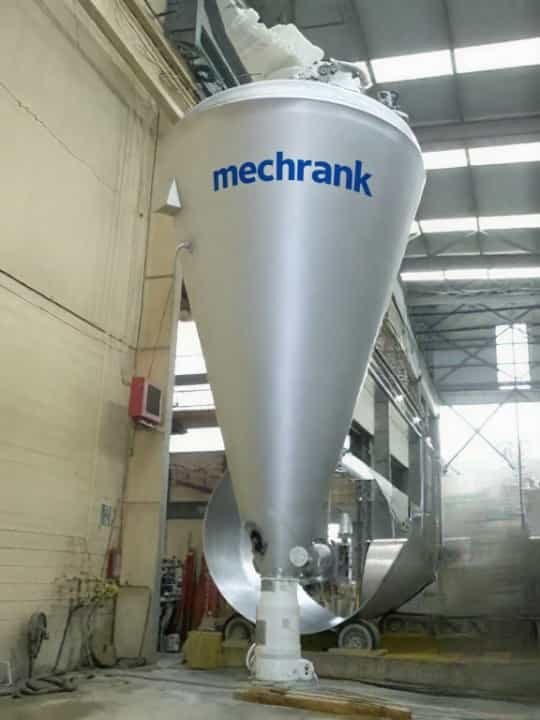
Key Factors
Picking the best dryer means thinking about many things. Each thing helps make sure the dryer works well for the company.
What kind of material you need to dry and how it acts
How much you need to dry at one time and how often you do it
How the dryer will fit with other machines in the process
If the mixer can also break up lumps or mix chemicals
What kind of drying, like hot air or vacuum, you want to use
Extra tools, like lumpbreakers or spray nozzles, for hard jobs
How much money it takes to buy and use the dryer
If it is easy to clean and keep working well
The shape of the chamber, which helps empty and clean it
If the maker has good skills and can test before you buy
Tip: Companies should pick dryers that fit their products and are easy to clean and fix.
Installation
Putting in a dryer can be hard. Companies must think about space, cost, and workers with the right skills. The table below lists some common problems and what they mean:
Challenge Category | Description |
|---|---|
The dryer costs a lot to buy and use, which is tough for small companies. | |
Complexity in Maintenance and Operation | You need skilled workers to run and fix the dryer. If there are not enough trained people, this is a problem. |
Space and Installation Constraints | The dryer is big and needs lots of space. Small factories may not have enough room. |
If you do not set up the dryer right, it can shake, make noise, or break. The dryer needs a strong, flat base and must be lined up right. Checking and caring for the dryer often helps it last longer.
Safety
Dryers for sensitive or risky materials must keep people and the area safe. These dryers use a closed system so dust, fumes, or product cannot get out. They often have special parts to stop explosions in dangerous jobs. The vacuum keeps the heat low, which protects the product and workers. The surfaces are easy to clean, which helps stop germs and keeps things pure. Many dryers have special seals and follow strict rules, like ATEX or FDA, to make sure they are safe.
Note: Safety parts help protect both the people using the dryer and the product’s quality.
A Conical Screw Dryer is simple to clean. It lets you remove almost all the product. The sealed design and vacuum system keep things safe inside. This helps protect sensitive or dangerous materials from getting dirty. The dryer mixes gently and spreads heat well. This keeps the product in good shape. Many industries use this dryer for important or fragile products. Companies can talk to suppliers or check their needs to see if this dryer is right for them.
FAQ
What types of materials can a conical screw dryer handle?
A conical screw dryer can dry powders, granules, pastes, and slurries. It works well with fragile, heat-sensitive, or dangerous materials. Many companies use it for products that need gentle care.
How does a conical screw dryer save energy?
The vacuum system makes liquids boil at lower temperatures. This means the dryer does not need as much heat. Indirect heating and good mixing also help use less energy.
Is cleaning a conical screw dryer difficult?
Most conical screw dryers have smooth and shiny surfaces. Many models use Clean-In-Place (CIP) systems. This design helps people clean the dryer quickly and easily.
Can the dryer recover solvents during drying?
Yes. The vacuum and condenser system catch solvents as vapor. The system changes the vapor back into liquid to reuse or throw away safely.
What safety features does a conical screw dryer offer?
The sealed system stops leaks and keeps things clean. Safety valves, dust filters, and explosion-proof parts protect workers and products. Many dryers follow strict safety rules for industries.

